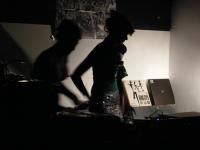 At the horizon of imagined cities as “transcultural megacities”, music tends to gain agency in the promotion of senses of place and belonging in, and to the city. We attempt to show the ways in which the processes and values associated with the internationalization of culture – which, more generally, are taking place within the context of the “new political economy and its culture”, may be explored under the light of some musical manifestations taking place in the city of Lisbon.
At the horizon of imagined cities as “transcultural megacities”, music tends to gain agency in the promotion of senses of place and belonging in, and to the city. We attempt to show the ways in which the processes and values associated with the internationalization of culture – which, more generally, are taking place within the context of the “new political economy and its culture”, may be explored under the light of some musical manifestations taking place in the city of Lisbon.
Stages
15.06.2010 | by Jorge de La Barre
 Kepha Oiro is a contemporary dancer and choreographer from Nairobi – Kenya. He's the artistic director of a new contemporary performing group: Tuchangamke, which conducts research into movement fusion in ethnic African communities, based at the Kenya National Theatre, Nairobi, and is the artistic director of the Dance Marathon initiative. This encounter with Nadine Siegert took place in Cologne (Germany) during an artist residency until March 2010.
Kepha Oiro is a contemporary dancer and choreographer from Nairobi – Kenya. He's the artistic director of a new contemporary performing group: Tuchangamke, which conducts research into movement fusion in ethnic African communities, based at the Kenya National Theatre, Nairobi, and is the artistic director of the Dance Marathon initiative. This encounter with Nadine Siegert took place in Cologne (Germany) during an artist residency until March 2010.
Stages
14.06.2010 | by Nadine Siegert
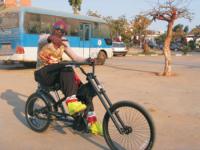 Kuduro sprang up Luanda's musseques (shanty towns) and spread rapidly through the Kandongueiros (street vendors or hawkers). New music appears on a daily basis, feeding Luanda's vocabulary with new expressions, new beats and new moves. This frenetic creation of urban languages plays an important role in today's Luanda, especially among the younger city dwellers.
Kuduro sprang up Luanda's musseques (shanty towns) and spread rapidly through the Kandongueiros (street vendors or hawkers). New music appears on a daily basis, feeding Luanda's vocabulary with new expressions, new beats and new moves. This frenetic creation of urban languages plays an important role in today's Luanda, especially among the younger city dwellers.
Stages
11.06.2010 | by Francisca Bagulho
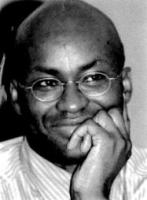 I hate the idea that African life is simple bare life - the life of an empty stomach and a naked body waiting to be fed, clothed, healed or housed. It is a conception that is embedded in "development" ideology and practice. It radically goes against people's own daily experience with the immaterial world of the spirit, especially as it manifests itself under conditions of extreme precariousness and radical uncertainty. This kind of metaphysical and ontological violence has long been a fundamental aspect of the fiction of development the West seeks to impose on those it has colonized. We must oppose it and resist such surreptitious forms of dehumanization.
I hate the idea that African life is simple bare life - the life of an empty stomach and a naked body waiting to be fed, clothed, healed or housed. It is a conception that is embedded in "development" ideology and practice. It radically goes against people's own daily experience with the immaterial world of the spirit, especially as it manifests itself under conditions of extreme precariousness and radical uncertainty. This kind of metaphysical and ontological violence has long been a fundamental aspect of the fiction of development the West seeks to impose on those it has colonized. We must oppose it and resist such surreptitious forms of dehumanization.
Mukanda
09.06.2010 | by Achille Mbembe
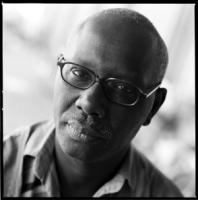 "Our Forbidden Places", an extraordinary documentary by Leila Kilani, returns to the political repression in Morocco in the time of Hassan II. Three generations of Moroccans evoke a completely human story of heroism and fortitude. Belying their serenity, all the characters form a perfect picture of Morocco today –they are still frightened by memories of being “buried alive” in Tazmamart prison and of countless cries of despair that few dared even to listen to. "Our Forbidden Places" is not really a film about a particular country, but rather it echoes all human memories of torment by extreme forms of state violence, be it blind or selective.
"Our Forbidden Places", an extraordinary documentary by Leila Kilani, returns to the political repression in Morocco in the time of Hassan II. Three generations of Moroccans evoke a completely human story of heroism and fortitude. Belying their serenity, all the characters form a perfect picture of Morocco today –they are still frightened by memories of being “buried alive” in Tazmamart prison and of countless cries of despair that few dared even to listen to. "Our Forbidden Places" is not really a film about a particular country, but rather it echoes all human memories of torment by extreme forms of state violence, be it blind or selective.
Afroscreen
06.06.2010 | by Boubacar Boris Diop
 In fact, to take up arms to dominate a people is, above all, to take up arms to destroy, or at least to neutralize, to paralyze, its cultural life. For, with a strong indigenous cultural life, foreign domination cannot be sure of its perpetuation. At any moment, depending on internal and external factors determining the evolution of the society in question, cultural resistance (indestructible) may take on new forms (political, economic, armed) in order fully to contest foreign domination.
In fact, to take up arms to dominate a people is, above all, to take up arms to destroy, or at least to neutralize, to paralyze, its cultural life. For, with a strong indigenous cultural life, foreign domination cannot be sure of its perpetuation. At any moment, depending on internal and external factors determining the evolution of the society in question, cultural resistance (indestructible) may take on new forms (political, economic, armed) in order fully to contest foreign domination.
Mukanda
02.06.2010 | by Amílcar Cabral
 “Geo-archaeological research(GAR)” is a research, held initially in Weimar (Germany), which has indicated several phases of work and diverse areas as fieldwork. This research aims to understand specific intercontinental geological phenomena, proposing the hypothesis of a geological fault, which took place in Europe and had other repercussions.
“Geo-archaeological research(GAR)” is a research, held initially in Weimar (Germany), which has indicated several phases of work and diverse areas as fieldwork. This research aims to understand specific intercontinental geological phenomena, proposing the hypothesis of a geological fault, which took place in Europe and had other repercussions.
To read
28.05.2010 | by Tânia da Fonte
 José Cabral came to this collective history in a unique way, having trained with his father amateur photographer and filmmaker — he also had a homonymous grandfather, on his father’s side, who was a governor (1910-1938) and who had a park named after him in the old capital Lourenço Marques (Continuadores Park, today). He started in cinematography and he joined his experience as a news photographer to documental programmes of a less urgent nature. Later, he was probably the first to distance himself from the routines of journalism, and he made that challenge very clear with the choice of works in display in the Iluminando Vidas exhibit: instead of war, misery, victims, ruins and promises of reconstruction, that can still be seen yet another face for exoticism, he showed feminine nudes without any ethnographical pretext.
José Cabral came to this collective history in a unique way, having trained with his father amateur photographer and filmmaker — he also had a homonymous grandfather, on his father’s side, who was a governor (1910-1938) and who had a park named after him in the old capital Lourenço Marques (Continuadores Park, today). He started in cinematography and he joined his experience as a news photographer to documental programmes of a less urgent nature. Later, he was probably the first to distance himself from the routines of journalism, and he made that challenge very clear with the choice of works in display in the Iluminando Vidas exhibit: instead of war, misery, victims, ruins and promises of reconstruction, that can still be seen yet another face for exoticism, he showed feminine nudes without any ethnographical pretext.
Face to face
28.05.2010 | by Alexandre Pomar
 Recent critical readings of Cape Verdean identity and intellectual history highlight the fact that Gilberto Freyre unknowingly destabilized the metanarrative of Euro-centered mestiçagem, by emphasizing instead Cape Verde’s cultural links to Africa (even if those links were impressionistically perceived by him).
Recent critical readings of Cape Verdean identity and intellectual history highlight the fact that Gilberto Freyre unknowingly destabilized the metanarrative of Euro-centered mestiçagem, by emphasizing instead Cape Verde’s cultural links to Africa (even if those links were impressionistically perceived by him).
To read
26.05.2010 | by Fernando Arenas
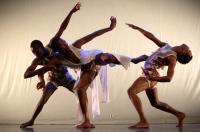 Gregory Maqoma, South-African dancer and choreographer, uses his origins to build his identity as an artist. The performer came to Luanda to present 'Beautiful Me', a show in which he is the only participant, and that reflects some of his concerns about south-african society and the political power as a whole, around the world
Gregory Maqoma, South-African dancer and choreographer, uses his origins to build his identity as an artist. The performer came to Luanda to present 'Beautiful Me', a show in which he is the only participant, and that reflects some of his concerns about south-african society and the political power as a whole, around the world
Face to face
24.05.2010 | by Joana Simões Piedade
 Africa is portrayed as an over-determined image. In other words, a place capable of shaping the abundance of circulating discourses, the terms and labels for the continent and the situations of traumatic nature. The widespread geography that characterises Africa both internal and externally, the continent remains a space of ambivalence that still polarizes fundamental issues as human rights, racial equality, apartheid, subordination, hybridization, mixing, the displacement of people and cultures.
Africa is portrayed as an over-determined image. In other words, a place capable of shaping the abundance of circulating discourses, the terms and labels for the continent and the situations of traumatic nature. The widespread geography that characterises Africa both internal and externally, the continent remains a space of ambivalence that still polarizes fundamental issues as human rights, racial equality, apartheid, subordination, hybridization, mixing, the displacement of people and cultures.
I'll visit
23.05.2010 | by Marta Mestre
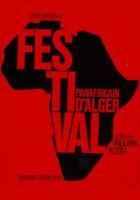 One part of the programm of the 7th Festival de Cine Africano de Tarifa, is called: "Utopia and Reality: 50 years of African Independencies?" Coinciding with the 50th anniversary of the Independence of 17 African countries, FCAT’10 offers a selection of African and non-African productions that explores, illustrates, questions and analyses this independence. There are films which talk about the life and ideas of figures like Aimé Césaire, Patrice Lumumba or Amilcar Cabral, or about the hope and dignity found after so many years of colonialism.
One part of the programm of the 7th Festival de Cine Africano de Tarifa, is called: "Utopia and Reality: 50 years of African Independencies?" Coinciding with the 50th anniversary of the Independence of 17 African countries, FCAT’10 offers a selection of African and non-African productions that explores, illustrates, questions and analyses this independence. There are films which talk about the life and ideas of figures like Aimé Césaire, Patrice Lumumba or Amilcar Cabral, or about the hope and dignity found after so many years of colonialism.
I'll visit
23.05.2010 | by Tarifa African Film Festival
 Subjects like discrimination – by skin color, social position or gender- all found an important place in Ingrid’s work. Gradually she has been focusing on conflict issues and the reasons why we live in violence.
In addition to her interest in subjects like the war and the media she is also very interested in the role of women, their strength and their projection in the world. Regarding that she stats “we can’t run away from our body. At the beginning it was not an easy thing to do but I acquired consciousness that my black woman’s body is, by itself, a statement. Then I started to work on this matter”.
Subjects like discrimination – by skin color, social position or gender- all found an important place in Ingrid’s work. Gradually she has been focusing on conflict issues and the reasons why we live in violence.
In addition to her interest in subjects like the war and the media she is also very interested in the role of women, their strength and their projection in the world. Regarding that she stats “we can’t run away from our body. At the beginning it was not an easy thing to do but I acquired consciousness that my black woman’s body is, by itself, a statement. Then I started to work on this matter”.
Face to face
22.05.2010 | by Joana Simões Piedade
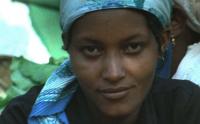 The Portuguese presentation at the 2009 São Paulo Architecture Biennial, “Five Africas/Five Schools”, reflects the different realities of the African countries whose official language is our own: for each of them a school prototype developed by a like number of architecture teams. For Guinea-Bissau, Pedro Maurício Borges has designed a Basic School in the city of Cacheu. In a context of extreme poverty , the possibility of building a school should suffice to suspend any other kind of critical judgment. Nevertheless, beyond the initiative’s eventual humanitarian value, there is still architecture. In a place where like everything else it is limited by what exists, one has to make do with very little. But with many other things as well: with memories of a country that interested the world.
The Portuguese presentation at the 2009 São Paulo Architecture Biennial, “Five Africas/Five Schools”, reflects the different realities of the African countries whose official language is our own: for each of them a school prototype developed by a like number of architecture teams. For Guinea-Bissau, Pedro Maurício Borges has designed a Basic School in the city of Cacheu. In a context of extreme poverty , the possibility of building a school should suffice to suspend any other kind of critical judgment. Nevertheless, beyond the initiative’s eventual humanitarian value, there is still architecture. In a place where like everything else it is limited by what exists, one has to make do with very little. But with many other things as well: with memories of a country that interested the world.
City
17.05.2010 | by Diogo Seixas Lopes
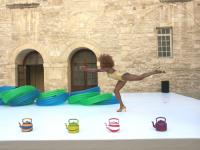 On the one hand I try to understand how African dance and as African considered corporalities are used as an aesthetic medium in common European cultural practices. How does European discourse create which images of African dance and performances? On the other hand and crucially, I focus on the African side of the coin: how do African dancers and choreographers (re)act and which are their individual choices in the scope of various challenges and do European discourse have any significance on African dancers’ and choreographers’ decisions?
On the one hand I try to understand how African dance and as African considered corporalities are used as an aesthetic medium in common European cultural practices. How does European discourse create which images of African dance and performances? On the other hand and crucially, I focus on the African side of the coin: how do African dancers and choreographers (re)act and which are their individual choices in the scope of various challenges and do European discourse have any significance on African dancers’ and choreographers’ decisions?
Stages
16.05.2010 | by Nadine Siegert
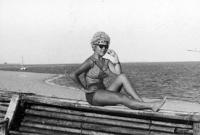 Filmed in 1965, “Catembe”, is a fictional documentary directed by Manuel Faria de Almeida about the everyday life in Lourenço Marques. The most outstanding aspect of this film is the fact that it represents the first critical interpretation of the Portuguese colonial reality. After the original piece was censored – with 103 cuts and obliteration of the censored parts – the second version was banned. Only half of its 2400 original metres survived, which led to a reference in the Guinness Book of Records as the film with most censored cuts in the history of cinema.
Filmed in 1965, “Catembe”, is a fictional documentary directed by Manuel Faria de Almeida about the everyday life in Lourenço Marques. The most outstanding aspect of this film is the fact that it represents the first critical interpretation of the Portuguese colonial reality. After the original piece was censored – with 103 cuts and obliteration of the censored parts – the second version was banned. Only half of its 2400 original metres survived, which led to a reference in the Guinness Book of Records as the film with most censored cuts in the history of cinema.
Afroscreen
16.05.2010 | by Maria do Carmo Piçarra
 In sub-Saharan Africa - with the possible exception of South Africa - the prohibitive cost to produce films, the poor state of cinema houses, the absence of governmental support for filmmaking, and the large offer of foreign films have tied many filmmakers to foreign funding, equipment, expertise, and audiences. Thus, African films have been dependent on overseas financial support which conduces to a type of cinematography not always well-received by African audiences.
In sub-Saharan Africa - with the possible exception of South Africa - the prohibitive cost to produce films, the poor state of cinema houses, the absence of governmental support for filmmaking, and the large offer of foreign films have tied many filmmakers to foreign funding, equipment, expertise, and audiences. Thus, African films have been dependent on overseas financial support which conduces to a type of cinematography not always well-received by African audiences.
Afroscreen
15.05.2010 | by Alessandra Meleiro
 What Mónica de Miranda intends is “to create space so that the migratory and trans–national flows are seen by themselves as a diversified and multifaceted reality as a platform for creative opportunities and a place of transit for personal, social and cultural changes. "At the heart of its strategy is the principle of interculturality, which should involve a gradual and systematic promotion of spaces and processes of positive interaction, a possible generalization of relations of trust, mutual recognition, for discussion, learning and exchange.
What Mónica de Miranda intends is “to create space so that the migratory and trans–national flows are seen by themselves as a diversified and multifaceted reality as a platform for creative opportunities and a place of transit for personal, social and cultural changes. "At the heart of its strategy is the principle of interculturality, which should involve a gradual and systematic promotion of spaces and processes of positive interaction, a possible generalization of relations of trust, mutual recognition, for discussion, learning and exchange.
Face to face
15.05.2010 | by José António Fernandes Dias
 It seems useful to delineate a genealogy of black internationalism as way to understand it's formation. Africa's independencies, beyond the action of africans and africans among the diaspora, take place due to a number of structural shifts. If we place the emergence of african internationalism in a broader perspective it will allow for a understanding of the paradigm changes that took place at the turn of the century.
It seems useful to delineate a genealogy of black internationalism as way to understand it's formation. Africa's independencies, beyond the action of africans and africans among the diaspora, take place due to a number of structural shifts. If we place the emergence of african internationalism in a broader perspective it will allow for a understanding of the paradigm changes that took place at the turn of the century.
To read
15.05.2010 | by António Tomás
 As in any occupied house it has it’s living and organizational rules. There, the following representatives rule: the unity secretary and the secretary of the hallway, block and floor who meet up to solve the residents’ problems, and to conduct the residents’ court in one of the hotel’s former suites. There, discussions concerning who is more entitled to housing (a woman with children has the upper hand), or about who is throwing dirty water onto someone else’s balcony, take place. There are two fundamental rules: “keep the cleanliness and the respect.”
As in any occupied house it has it’s living and organizational rules. There, the following representatives rule: the unity secretary and the secretary of the hallway, block and floor who meet up to solve the residents’ problems, and to conduct the residents’ court in one of the hotel’s former suites. There, discussions concerning who is more entitled to housing (a woman with children has the upper hand), or about who is throwing dirty water onto someone else’s balcony, take place. There are two fundamental rules: “keep the cleanliness and the respect.”
City
14.05.2010 | by Marta Lança